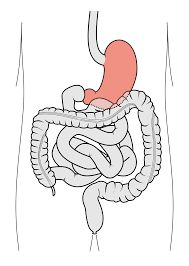Osteochrondroma
- Kanav Dani

- Nov 22, 2022
- 2 min read
Bones and joints are some of the scariest places to have injuries or any other medical-
related issues. They are the basis of human movement. Specifically, the knees are essential for many human functions, including walking, running, jumping, squatting, etc. When a problem appears in the knees, it can be especially worrisome. One such problem is a condition known as osteochondroma.
Osteochondroma is an overgrowth of cartilage or bone that occurs on the growth plate
present within the knee. Fortunately, this condition is noncancerous, despite its common
appearances in people ages 10 to 30. It is unknown as to what exactly causes this condition, as
there is one type that is inherited, and another that isn’t. Symptoms of this growth include a
visibly hard, yet painless mass that appears, pressure or irritation in exercise, the appearance of
one leg seeming to be longer than the other, and soreness of nearby muscles. This condition is
also associated with people who are generally shorter than they should be for their age.

There are three primary methods that can be used to diagnose osteochondroma. One
method is through an MRI. Large magnets and radio-frequencies are used with a computer to
create detailed images of organs and structures in the body. These images can then be used to
determine whether an unusual growth is present on a growth plate. Another method of
identification and diagnosis is through an x-ray. Invisible electromagnetic beams are used to
create images of tissues, bones, and organs. Similarly to the MRI, these images are also then
used to determine the presence of an unknown growth. The third method used to identify and
diagnose osteochondroma is through a CT scan. In this test, X-rays and computers are used to
make images (slices) of the body. These scans show detailed images of any part of the body.
Although osteochondroma can be detrimental to certain lifestyles in the short term, it is
fixable through some treatments that are determined based on age, medical history, existing
illnesses, as well as tolerance to certain medicines. Usual forms of treatment include surgery to
completely remove the mass or medicines that can help numb pain that may be caused by the
growth. Osteochondroma, while it isn’t necessarily preferred, is mostly harmless and can be
dealt with quite easily.



Comments